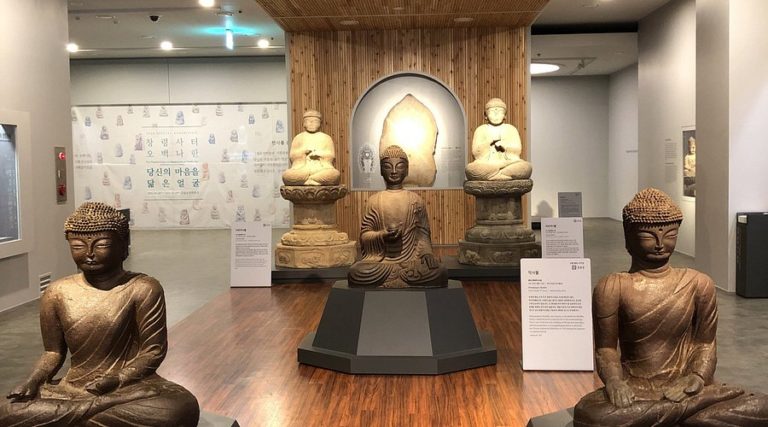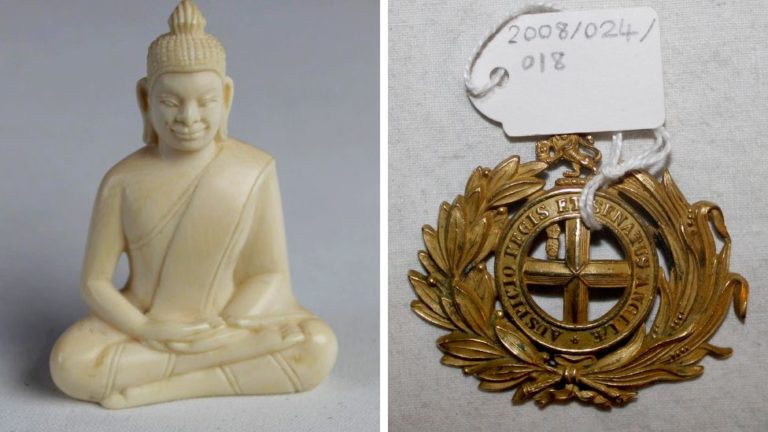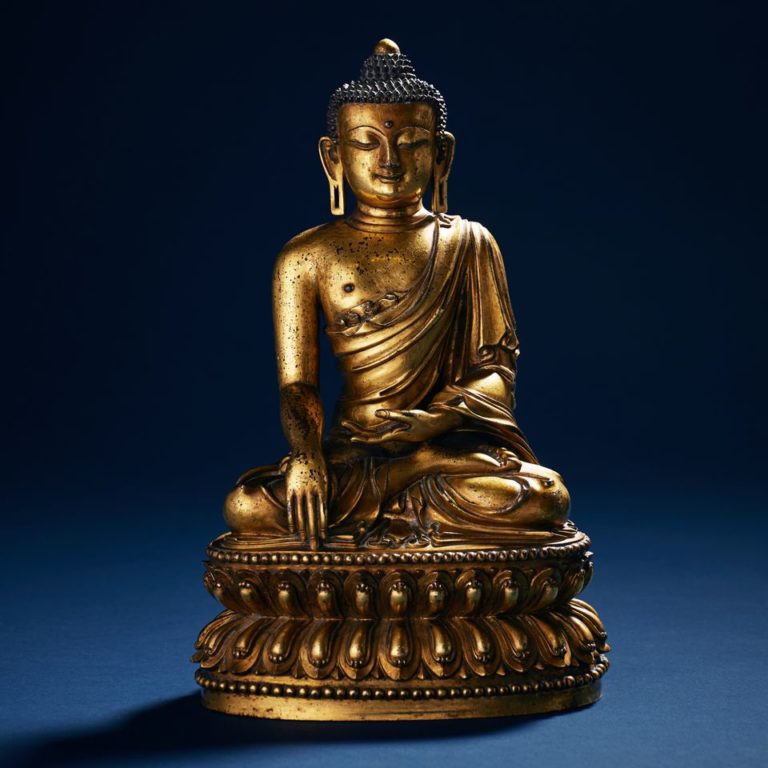Here’s why India’s largest statue of the Reclining Buddha, built over three months by a team of 22 artisans in Kolkata, is a fascinating piece of art.
Buddha Jayanti, Buddha Purnima, or Vesak — India’s largest statue of the Reclining Buddha was to have been installed at the Buddha International Welfare Mission temple in Bodh Gaya.
The ceremony has been put off due to Covid-19 restrictions, but the giant 100-foot fibreglass statue, built over three months by a team of 22 artisans in Kolkata, remains a fascinating work of art, as much for its size as for the way The Buddha has been depicted.
The Reclining Buddha
A reclining Buddha statue or image represents The Buddha during his last illness, about to enter Parinirvana, the stage of great salvation after death that can only be attained by enlightened souls. The Buddha’s death came when he was 80 years old, in a state of meditation, in Kushinagar in eastern Uttar Pradesh, close to the state’s border with Bihar.
Dr Vruttant Manwatkar, assistant professor at Mumbai’s K C College, said, “The Reclining Buddha comes from this very well-recorded final moment of the Buddha’s life, which is why it could be recreated visually with such distinct details in statues and paintings.
“This also signifies the Buddha’s last deeksha — even while on his deathbed, he took a follower into the fold,” he said.
Buddhist scholar Prof Ravindra Panth, former vice-chancellor of the Nava Nalanda Mahavihara deemed university in Nalanda, Bihar, said, “Mahaparinirvana of the Buddha is supposed to be a very important event that happened in Kushinagar; it is not simply a demise, it is the great demise, after which there is no rebirth for him. So, it is his final going away.”
Iconographic representation
Statues and images of the Reclining Buddha show him lying on his right side, his head resting on a cushion or on his right elbow. It is a popular iconographic depiction in Buddhism, and is meant to show that all beings have the potential to be awakened and be released from the cycle of death and rebirth.
The Reclining Buddha was first depicted in Gandhara art, which began in the period between 50 BC and 75 AD, and peaked during the Kushana period from the first to the fifth centuries AD, Dr Manwatkar said.
Prof Panth said that since the Buddha was against idol worship, in the centuries immediately following his parinirvana (483 BC), his representation was through symbols. As the devotional aspect subsequently entered Buddhist practice, however, iconographic representations of The Buddha began.
Reclining Buddha outside India
Dr Manwatkar said that in Sri Lanka and India, the Buddha is mostly shown in sitting postures, while the reclining postures are more prevalent in Thailand and other parts of South East Asia.
The largest Reclining Buddha in the world is the 600-foot Winsein Tawya Buddha built in 1992 in Mawlamyine, Myanmar.
 The largest Reclining Buddha in the world, Winsein Tawya Buddha in Mawlamyine, Myanmar. (Wikimedia Commons)
The largest Reclining Buddha in the world, Winsein Tawya Buddha in Mawlamyine, Myanmar. (Wikimedia Commons)
In the late 15th century, a 70-metre statue of the Reclining Buddha was built at the Hindu temple site of Baphuon in Cambodia’s Angkor.
The Bhamala Buddha Parinirvana in Pakistan’s Khyber Pakhtunkhwa province, which dates back to the 2nd century AD, is considered the oldest statue of its kind in the world.
There are several statues of the Reclining Buddha in China, Thailand, Japan, Indonesia, and Malaysia.
Reclining Buddha in India
Cave No. 26 of the UNESCO World Heritage Site of Ajanta contains a 24-foot-long and nine-foot-tall sculpture of the Reclining Buddha, believed to have been carved in the 5th century AD.
Nashik-based restorer and research photographer Prasad Pawar, who has been working for more than two decades to restore the fading artwork of Ajanta digitally, said of the sculpture: “It shows the Buddha reclining on his right side, and behind him are two sala trees. At the base of the sculpture are his begging bowl, a water pitcher and walking stick. While his disciples are shown sitting in mourning, celestial beings are shown on top, rejoicing in anticipation of the Buddha’s arrival in heaven.”
Kushinagar, where the Buddha actually attained parinirvana, has a 6-metre-long red sandstone monolith statue of the Reclining Buddha inside the Parinirvana Stupa.
Other depictions of the Buddha
Elsewhere in India, Prof Panth said, there are a lot of Buddhas in sitting postures, mostly pertaining to his Enlightenment rather than to his demise.
At the Mahabodhi temple, the Buddha is sitting in the bhoomi-sparsha mudra, where his hand is pointing towards the ground. It symbolises earth as being witness to his enlightenment.
At Sarnath, where the Buddha gave his first sermon, the stone statue has a hand gesture called the dharma-chakra mudra, which signifies preaching. This is also the most popular depiction in India, along with the Bodhi tree depiction.
Experts say the Buddha is depicted in over a hundred poses around the world. While the Sitting Buddha — most common depiction — is believed to be teaching or meditating, the Standing Buddha signifies rising to teach after reaching nirvana.
The Walking Buddha is either beginning his journey toward enlightenment or returning after giving a sermon. This is the least common of the Buddha postures, and is seen mostly in Thailand.
Prof Panth said the Buddha statues found in South East Asia are an amalgamation of all his various postures and life events, including mahaparinirvana, but not limited to it.




